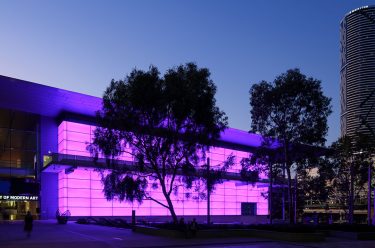James Turrell’s Architectural Light series represents the artist’s smallest works in number, but the largest in terms of sheer physical size, and they adorn public and private buildings and structures around the world, including, of course, the Gallery of Modern Art’s (GOMA) Night Life 2018.
In this interview, I spoke with James Turrell from the artist’s home near Flagstaff, Arizona, about the idea of taking light out of a room and into the night.1
RELATED: James Turrell
SIGN UP NOW: Subscribe to QAGOMA Blog for the latest announcements, artwork highlights, and behind-the-scenes features
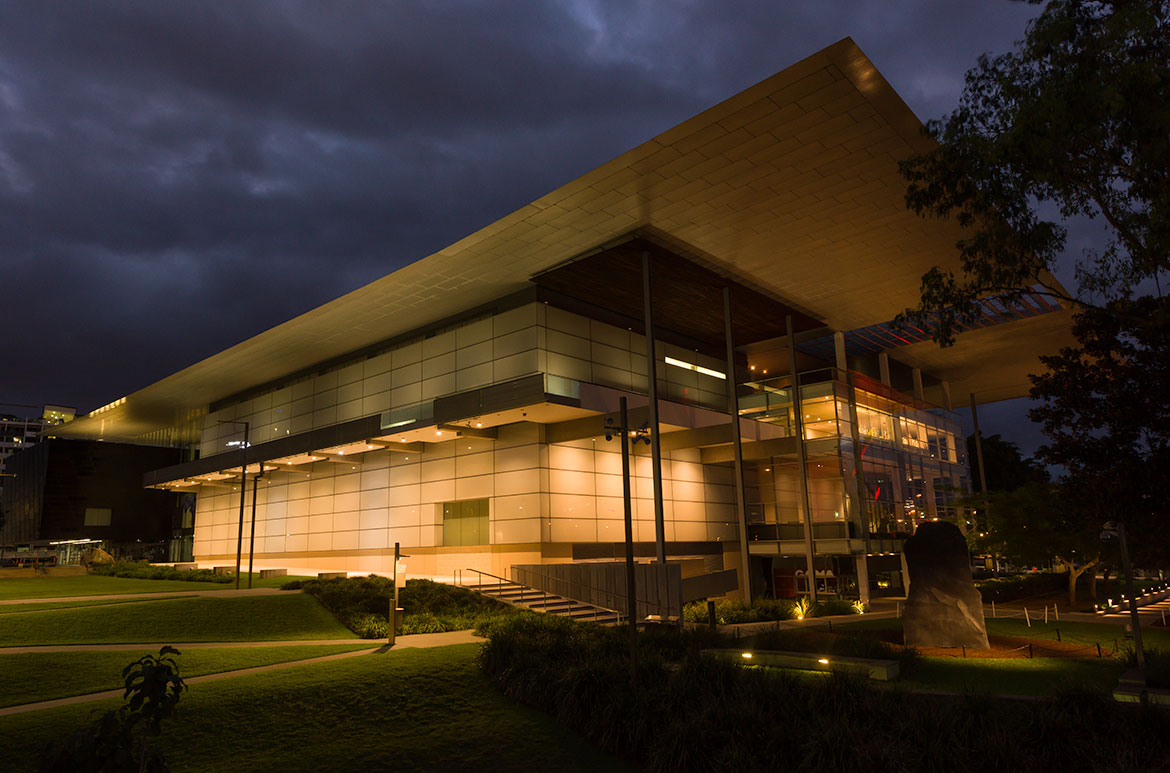
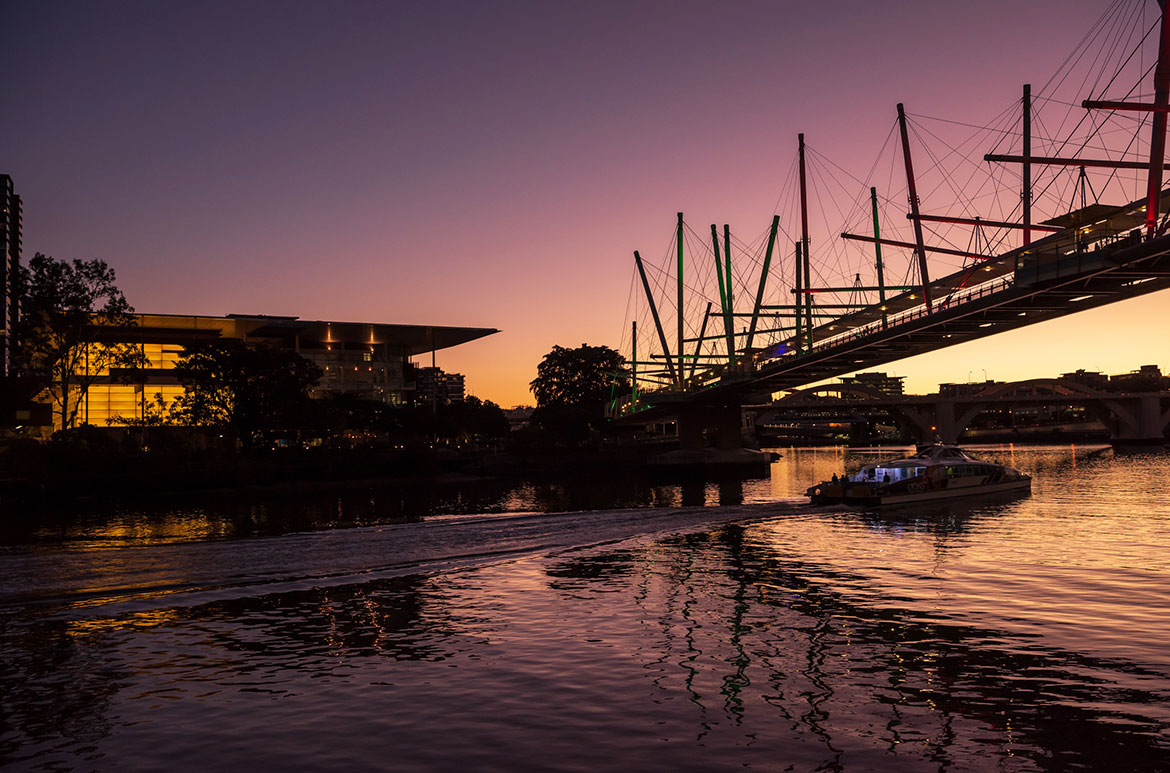
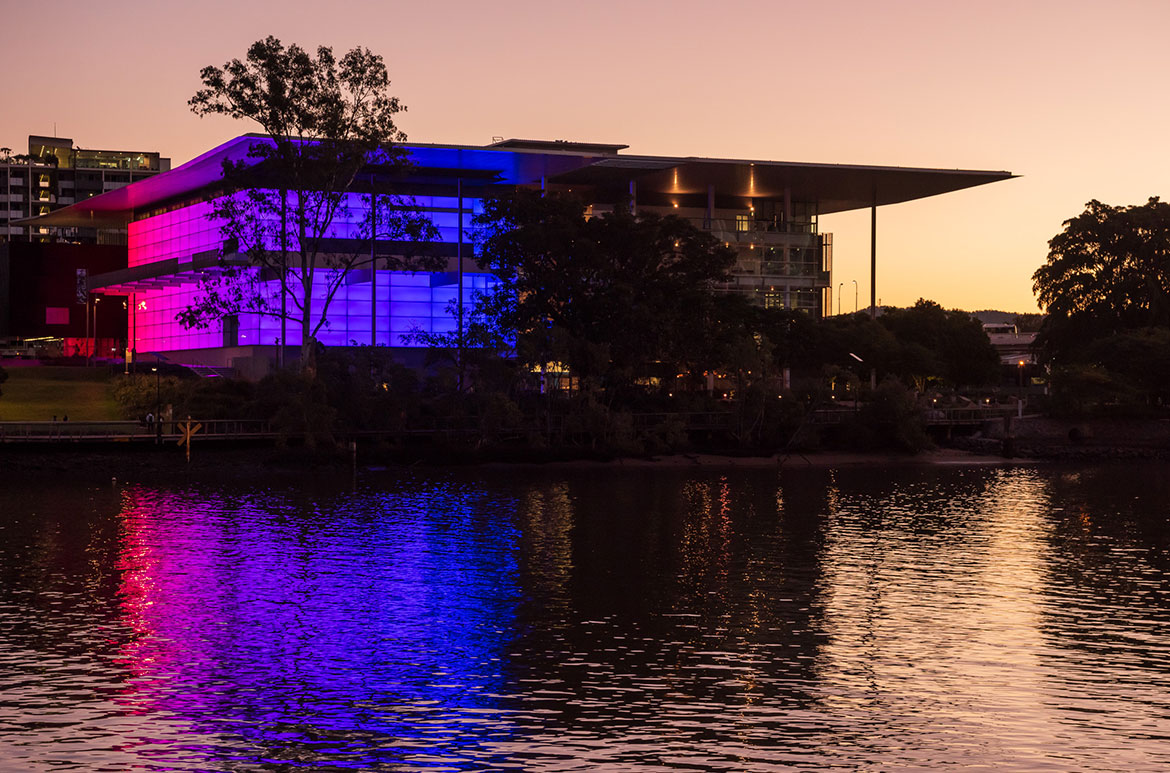
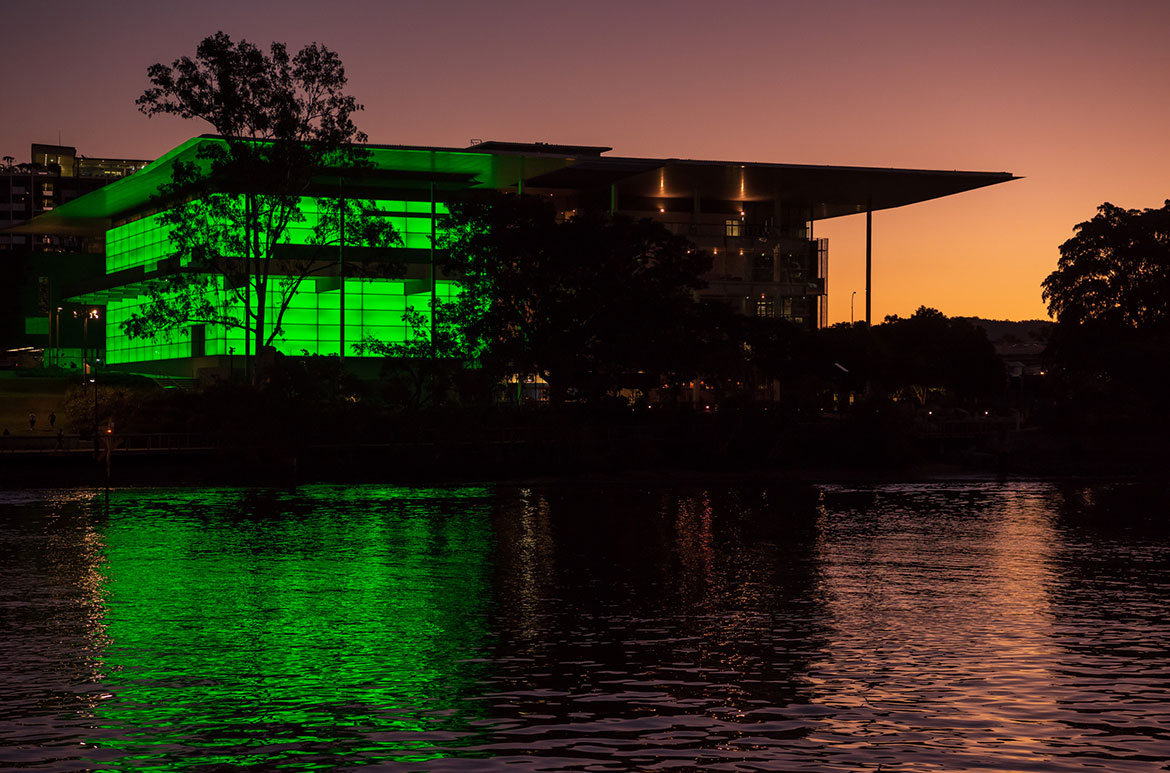
Chris Saines (CS) | James, I wanted to take you back to the concept statement that you provided to me in 2016 — in response to the brief for the work, which, of course, we now know as Night Life. You recalled this formative experience that you’d had as a young boy, about six. You were sitting alongside your father as he piloted his small plane in to land in Los Angeles, just as the sun set over the city. Why has that particular moment remained such a vivid and important one right up to the present day?
James Turrell (JT) | Well, the big thing was that the sun had actually gone down before we were landing, and we were just watching the lights of the city come out. It’s always beautiful, and it makes us seem like we’re almost a bioluminescent lichen on the surface of the earth. And, just as we were watching the lights beginning to come out, which was very beautiful, he said: ‘a peasant by day, a princess by night’. I’ll never forget that. We do this ourselves — we dress up, change our clothes from our work clothes, or however we were during the day, and then go out at night. It’s this other time when we have this other raiment that we put on. And buildings do this and structures do this and cities do this.
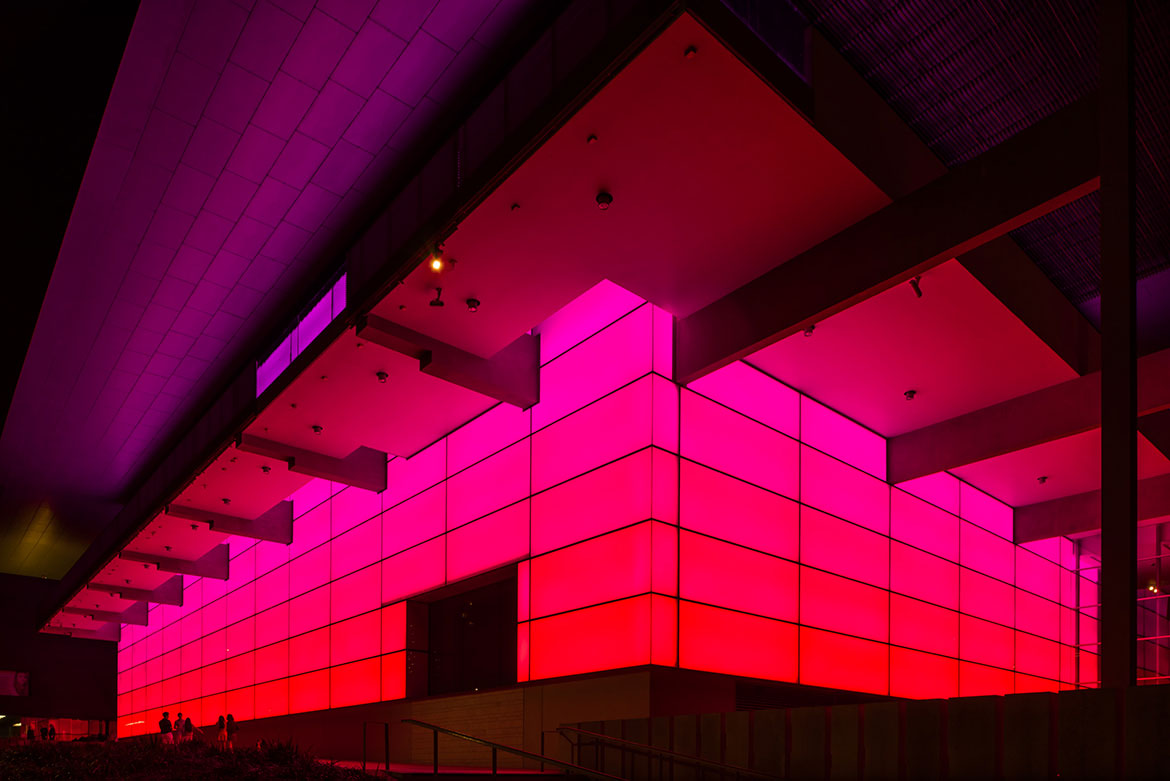
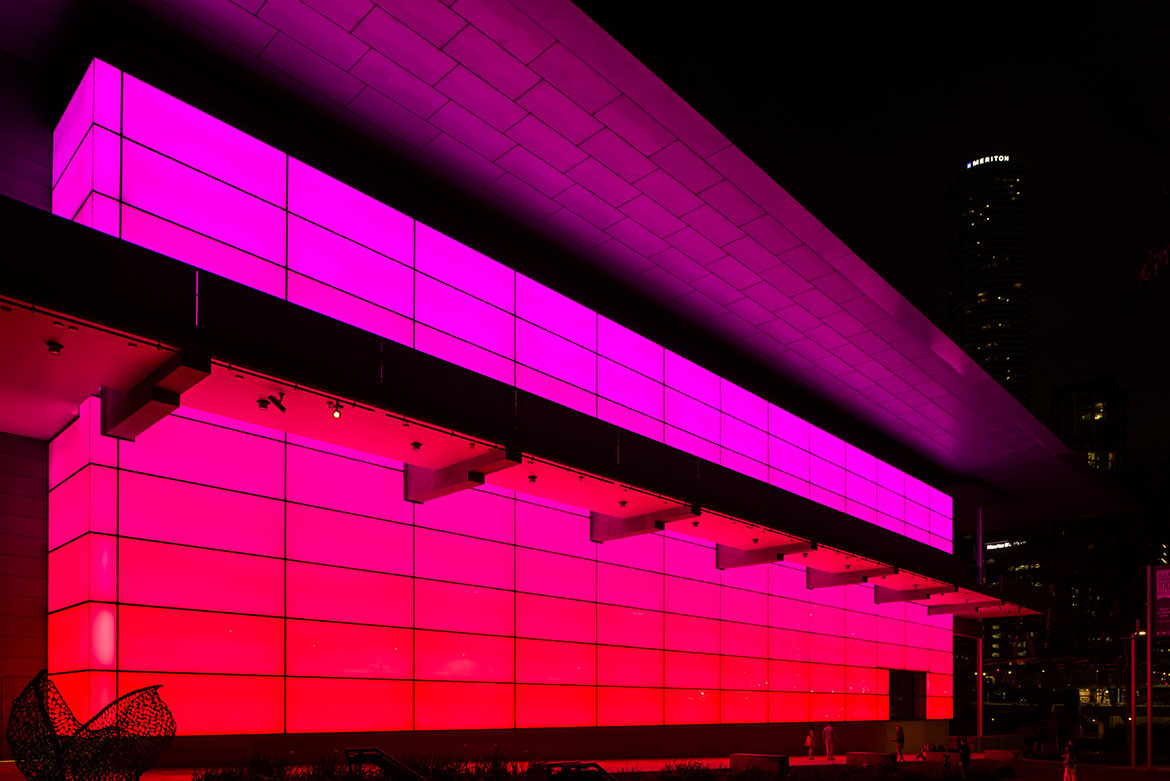
CS | It’s true to say that the public immediately engaged with Night Life, so it prompts me to ask, who is the audience for the works in this series, and who do you have in mind when you conceive of them?
JT | Well, this is a strange thing, because I know that Carl Andre said that his art was for everyone, but many people didn’t understand that or see any art in his work whatsoever.2 And I come from a Quaker family that does not believe in art — they think art is a vanity. The fact is, I like art where you don’t have to read about it to know how to look at it. And so I do want [to make] something that people respond to, you know, and it’s terrible to say, but it’s not that different than when I was a child in a crib, fascinated by the light above me. It’s this quality that you don’t need a program to tell the players [how to play] — you know that it’s you and how you are looking, and that it’s made for you and how you see. This idea of almost a conversation between buildings, this idea of raiment at night and a building taking on a new personality. The fact is, the work is rather astonishingly simple and I don’t want to need it to require an intellectual support system. I guess that would be the best way to say it. On the other hand, I think that if you get into anything intellectually, it can be quite deep and profound, and [my work has] a lot to do with how we think about our built environment, how we think about structures at night and how we think about the use of energy, all these things. So there is a lot to say about all these things. Of course, now that we’re involved with LED light, things are changing. Rather than putting light outside and aiming it up at a building that then spills up into the night sky and decreases our ability to see the stars at night, I do enjoy having the light within a building . . .
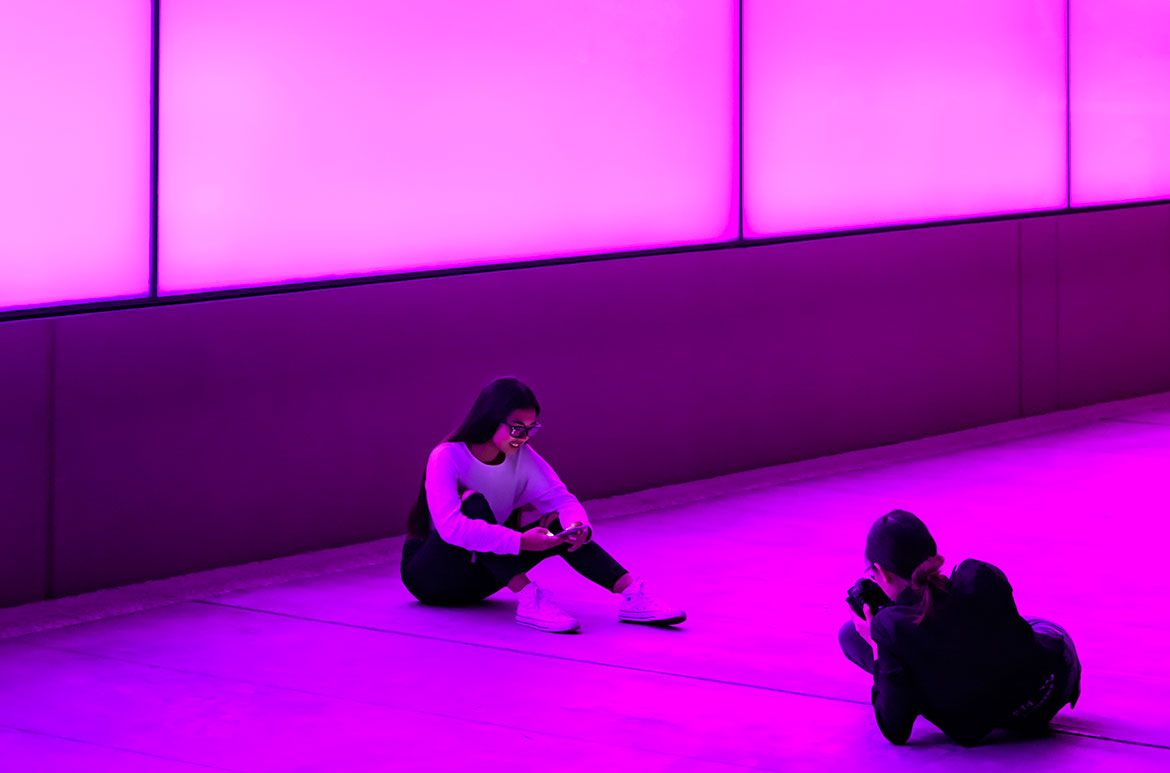
CS | That leads very well into my next question. When planning a new work in this series, what are the first principles that come into play as you form your initial response to a commission brief?
JT | First of all, it’s a look at the building, its location and the age or time of the building, where it sits in the history of the art of architecture, and to have a way of understanding what the building is expressing — its connection with the built environment around it [is very important]. It was very helpful to get images that were taken all around GOMA, looking [at the building] every which way. Some photos seemed like they have little to do with anything I would be doing, but they helped me to know about the area and its history.
CS | So it’s about where a building is in the world, how it relates to the city around it and the history of that place. It’s all incredibly important. How precisely have you applied those first principles to developing the work here in Brisbane?
JT | Sometimes you know more about how to make up your own history as you see more of it. Some of these things are unintended, but then as this history goes forward, you [end up] not just seeing yourself, but seeing yourself in relationship to all these other factors, not just people. If you’re involved in art, you’re going to be a globalist. You are thinking about people all over the world, and you think about the different places where things go and the different characters of landscape, atmosphere, and people and culture.
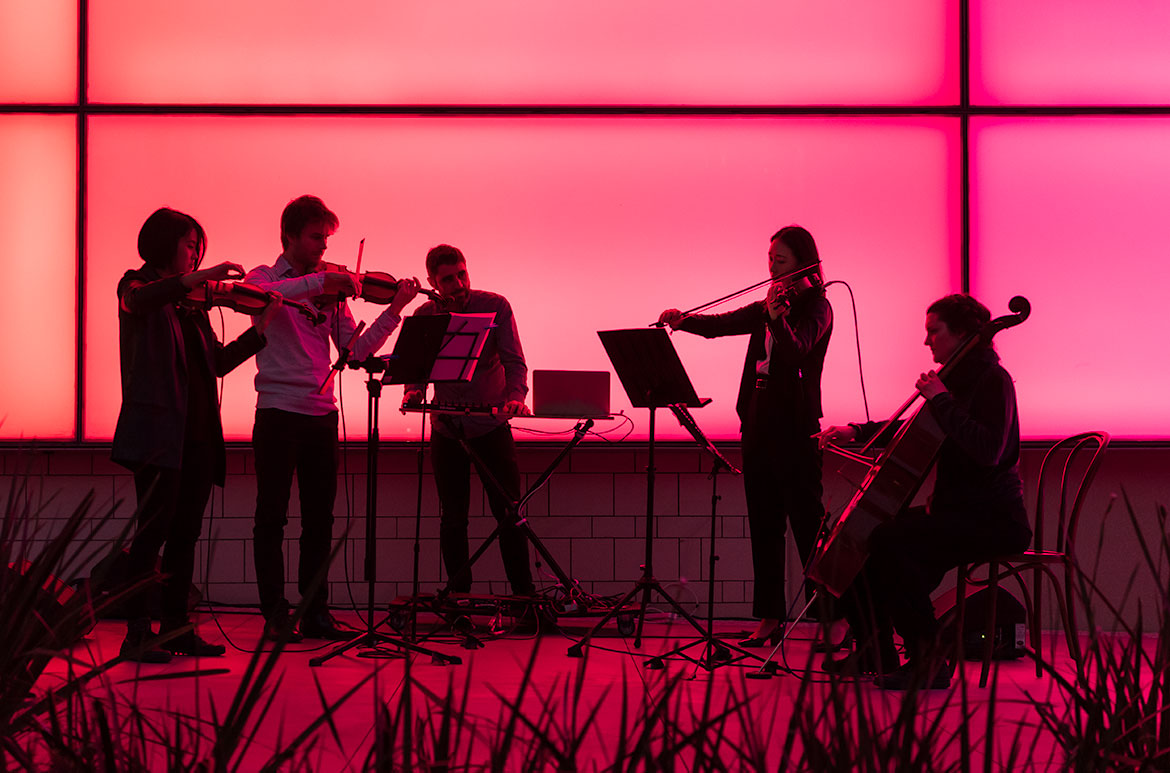
CS | The architects who were responsible for GOMA had a great vision in that they imagined a light or a projection work contained in a cavity behind the building’s north-east and south-east facades, the two big glass facades facing Maiwar Green and the Brisbane River. Have you ever made a work that involved using some part of a building’s glass facade as a kind of monumental light box?
JT | No, I haven’t, and this is the first time that this has been possible. In a way, it wasn’t as easy as I first thought . . . because we had to go back and forth and take pictures of this and that. So it was more difficult than I had thought, but we could have made it easier if we were involved in that design; however, that was already there, and that was something that was really quite special. It was something I was actually very, very pleased to work with.
CS | So, given that GOMA is a contemporary art museum, in what ways did that influence your thinking about what this work could be for Brisbane?
JT | The first thing I want to say is that there is nothing but contemporary art, because the artist was living when it was made. So the context of all art is contemporary. However, we talked about the time and the period and particularly the context of the reality that was formed at this time, and it’s wonderful to be involved with a [structure] from my time. It’s been very different with many earlier buildings . . . So this was a special project. As I said before, in a way, you would think that this would be right up my alley, but we had some difficulty, because of the narrow-ness, and also just trying to get the lighting even with the fixtures that we have available today.
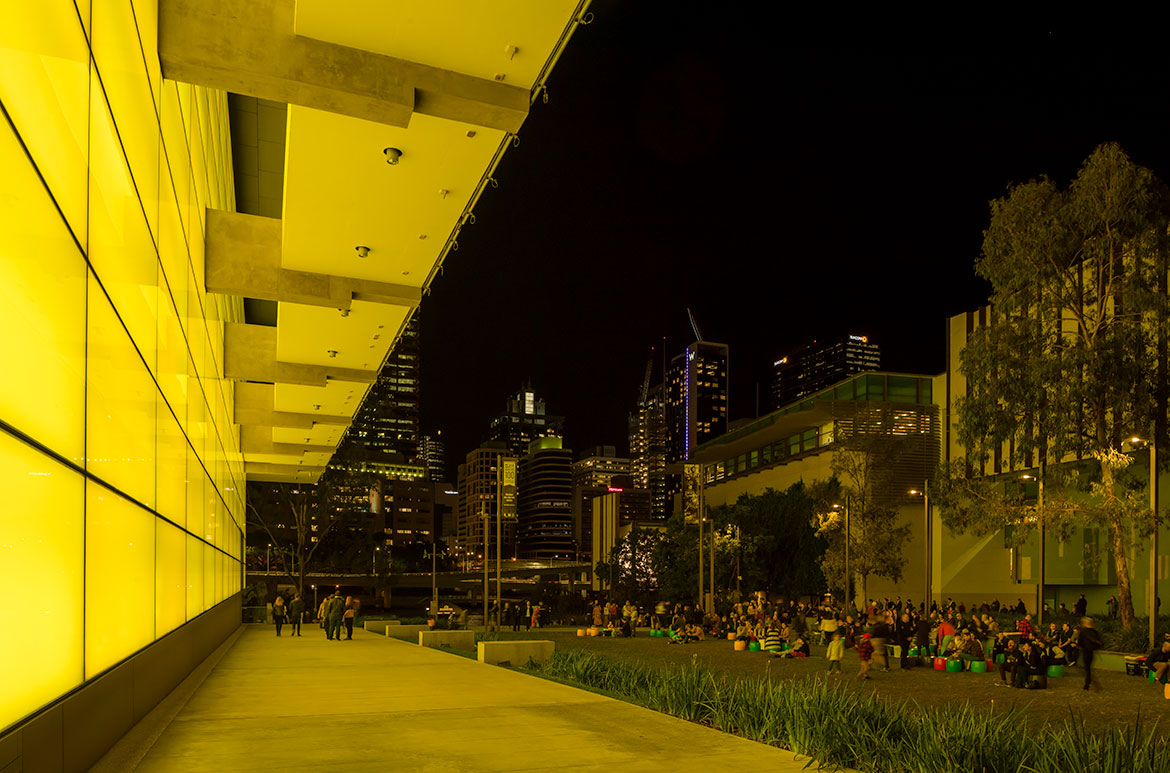
CS | Is staging a work like Night Life a little bit like staging an opera? You know, the performer being the work itself and the building, and the city its stage?
JT | It totally is the performer, and I’m lighting the performer.
CS | Does that mean that, in a way, you’re working like a composer who’s scoring with light, rather than with sound? Is that how you also try to express elements like time and duration that are in Night Life?
JT | Yes, very much so. I mean, this is a scoring. I’m also trying to give it my sense of time, which is to slow things down, and that helps in that I can bring in more subtleties and nuances of colour, [in the hope that] they’re actually noticed. And so it is literally a scoring. A lot of that came from working with operas in Europe.3
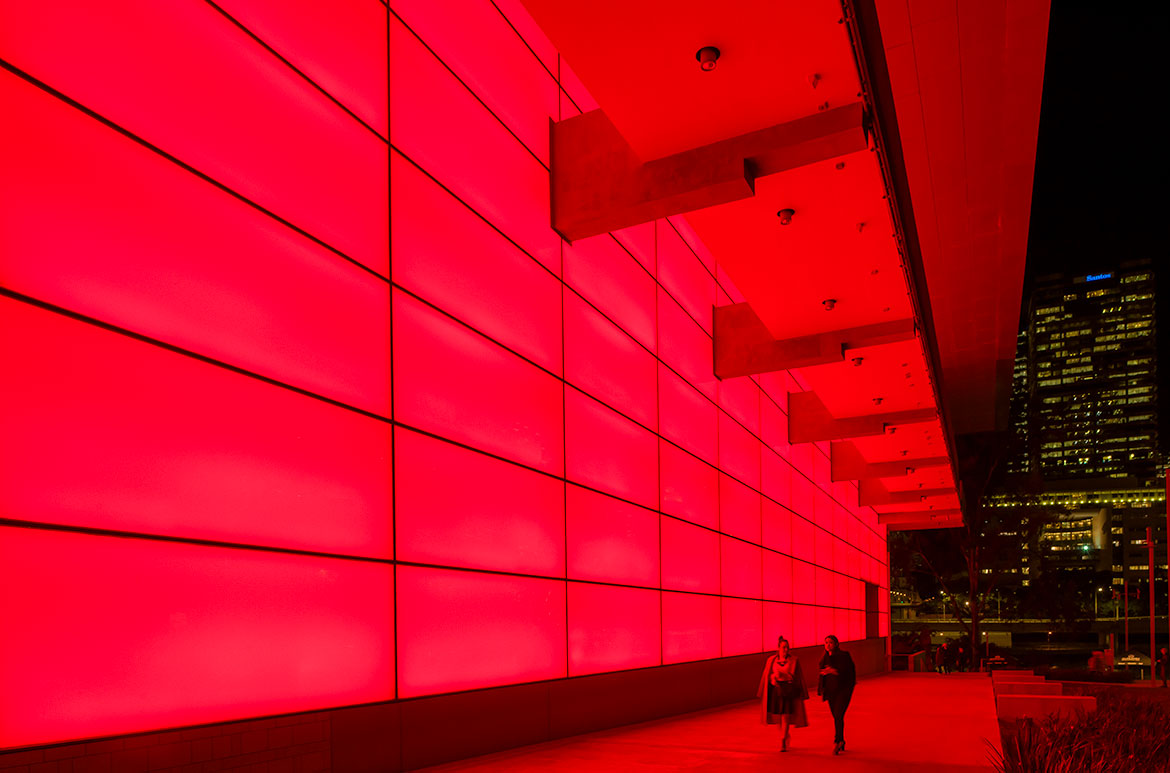
CS | I don’t think I’ve seen a building in which you’ve admixed colour in this particular way, in our work, the colour shifts — red shifts into orange which shifts into the next colour. I don’t think I’d seen that in any of your other Architectural Light works. Is that the case?
JT | That’s the case, and that is also largely due to LED light. Previously, we didn’t have the ability to work with LED light. The colour [before] was quite flat, and we didn’t have 16-bit technology or the level of computer control that we now have. So, in some ways, I’ve taken advantage of that, as well as of this modern building that had this light box quality.
CS | What is it about the quality of light that you have created in this work — its colour temperature, its volume? It seems to me that both of those things have been ‘turned up’ in Night Life.
JT | That’s very true, particularly because of the large area that I was able to work with. Then, by slowing it down, introducing one colour into another, you get to notice colour temperatures and colour qualities that are often quite special and unusual.
CS | Since the work has been in the world, it’s been variously described in terms such as breathing light, beauty, generosity . . .
JT | You know, you have these canvases or these situations or possibilities, these opportunities that exist, and, as any artist would, you go there, whether or not [these opportunities] can be realised. Sometimes they aren’t realised right away, but this is one that was realised in a way that actually feels very good . . .
This is an edited extract from James Turrell—Night Life Queensland Art Gallery | Gallery of Modern Art 2019 available onsite and online from the QAGOMA Store.
Chris Saines CNZM is Director, QAGOMA
Endnotes
1 Chris Saines spoke with James Turrell in April 2019 via Skype; the interview has been edited and condensed for clarity.
2 Carl Andre (b.1935) is a sculptor and poet, and a leading exponent of Minimalism. He constructs sculptures from modular units of industrial materials, for example, planks of timber, blocks of wood, house bricks and metal plates.
3 James Turrell collaborated with French composer Pascal Dusapin on the opera To Be Sung. First staged in Paris in 1994, the opera was then performed extensively throughout Europe.
Know Brisbane through the Collection / Read about Australian art / Subscribe to QAGOMA YouTube to go behind-the-scenes
Feature image: The public engaged with Night Life / James Turrell, United States, b.1943 / Night Life 2018 / Architectural light installation (exterior) / Commissioned 2017 to mark the 10th anniversary of the opening of the Gallery of Modern Art. This project has been realised with generous support from the Queensland Government; Paul, Sue and Kate Taylor; the Neilson Foundation; and the Queensland Art Gallery | Gallery of Modern Art Foundation Appeal / Collection: Queensland Art Gallery | Gallery of Modern Art / Building: Gallery of Modern Art / Location: Brisbane, Australia / © James Turrell
#JamesTurrell #TurrellGOMA #QAGOMA

